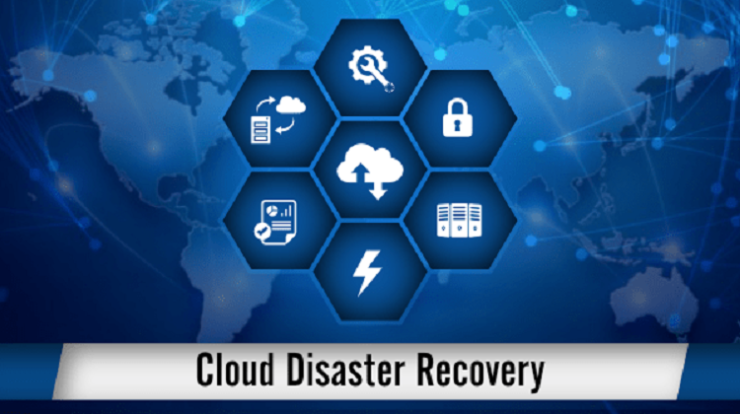
Disasters can happen to any organization, regardless of size or industry. When disaster strikes, you must have the plan to minimize the damage and downtime. One key component of your disaster recovery plan should be the cloud. This article will discuss how to create an effective cloud-based DR plan.
What is cloud disaster recovery, and why do you need it?
Cloud-based disaster recovery, or cloud DR, is the process of using cloud-based technologies and services to help protect your organization against data loss or downtime in the event of a disaster. It can include storing critical business data on cloud servers, backing up data regularly, or using cloud computing to run applications and business systems.
While many different cloud-based DR solutions are available, it’s essential to do your research and find the right one that fits your organization’s needs and budget. Some key factors to consider when choosing a cloud DR solution include cost, security, scalability, ease of use, and level of support.
The benefits of having a cloud-based DR plan
There are many benefits to using a cloud-based DR plan, including increased scalability and flexibility, lower costs compared to on-premise solutions, faster recovery times in the event of a disaster, and reduced IT overhead. Cloud services are often more secure than traditional on-site storage options, as cloud providers have teams dedicated to monitoring and securing their cloud environments.
To create an effective cloud-based DR plan, it’s vital to ensure that your organization fully understands its needs and goals, regularly assesses your cloud infrastructure to identify potential risks, and works with experienced cloud providers who can help you optimize and customize your cloud DR solution. With the right cloud disaster recovery plan in place, you can rest assured that your business is better protected against data loss or downtime during a disaster.
How to create a cloud disaster recovery plan
Start by assessing your organization’s needs and goals regarding cloud-based disaster recovery. It may include evaluating the level of risk your business is currently facing, considering the costs and benefits of different cloud DR options, or identifying potential risks or gaps in your current cloud infrastructure.
Once you clearly understand your organization’s needs, work with an experienced cloud provider to design a customized cloud DR solution that fits your budget and meets all your requirements. It may involve choosing a cloud service provider with robust security measures and regular data backups, implementing scalable cloud technologies such as serverless computing or containerization, or using monitoring tools to ensure optimal performance and uptime for critical applications and systems.
Finally, regularly assess and optimize your cloud DR plan as your organization evolves and grows. It may involve checking in with your cloud provider to identify potential risks or gaps in your cloud infrastructure or making changes to reflect new business goals or technological advancements. With the right cloud disaster recovery plan in place, you can rest assured that your organization is better protected against data loss or downtime during a disaster.
The different types of clouds you can use for DR
There are many different cloud platforms that you can use for cloud-based disaster recovery, including public cloud services such as Amazon Web Services (AWS) and Microsoft Azure, private cloud solutions such as OpenStack or VMware vCloud Suite, and hybrid cloud architectures that combine elements of both public and private cloud services. When choosing a cloud platform for DR, some factors to consider include cost, ease of use and integration with your existing infrastructure, level of security and compliance requirements, scalability, and level of support offered by the provider. Ultimately, the best cloud platform will depend on your organization’s specific needs and goals.
How to react when your business suffers a data loss or outage
Stay calm and focus on assessing the situation. Begin by contacting your cloud provider to get a clear picture of what has happened, how long the outage is expected to last, and any steps you should take in response. Next, gather all relevant stakeholders to determine the impact of the outage on your business operations, identify critical systems or applications that need to be prioritized for recovery, and confirm any safety or security measures that should be taken.
Once you clearly understand the situation, begin taking steps to mitigate any potential data loss or downtime as quickly as possible. It may involve using cloud-based monitoring tools or communication platforms such as Slack or HipChat to update key stakeholders about the status of the outage, putting contingency plans or disaster recovery protocols in place to ensure the continuity of your business operations, or enlisting external support from cloud experts or consultants if necessary.
Finally, focus on learning from any mistakes made during the incident to improve your cloud disaster recovery plan in the future. It means adjusting your cloud infrastructure to prevent similar outages in the future, implementing new safeguards and backup processes for critical data and applications, or investing more heavily in training your team to help them better understand their role during an incident.
Conclusion
Whether your business is impacted by a cloud outage, data loss, or another disaster, it is essential to have an effective cloud disaster recovery plan. It may involve choosing the right cloud platform for your needs, implementing scalable cloud technologies and monitoring tools, and focusing on continuous improvement and regular assessments to ensure optimal performance and protection against downtime. With the right approach, you can rest assured knowing that your organization is better prepared to handle any disruption or incident in the cloud.






